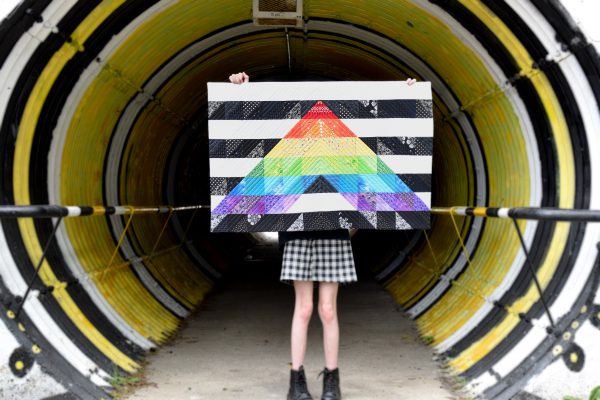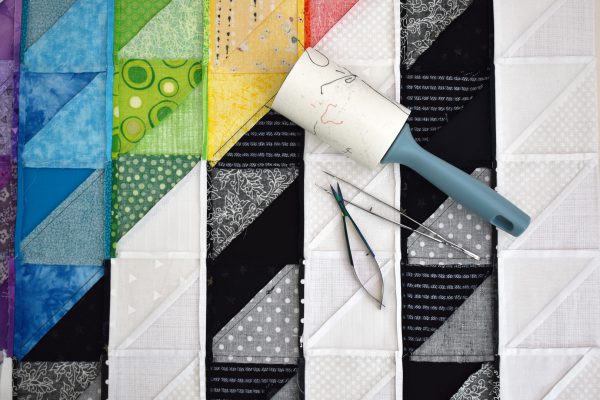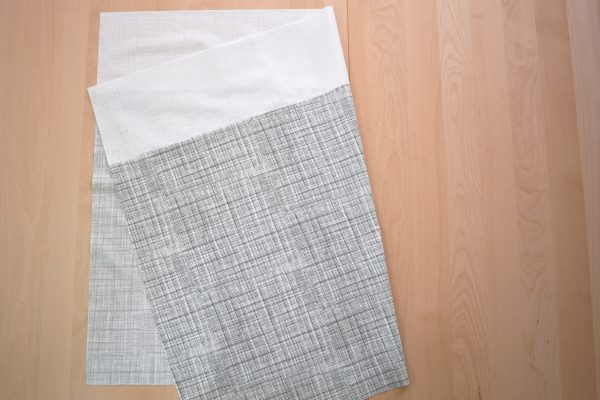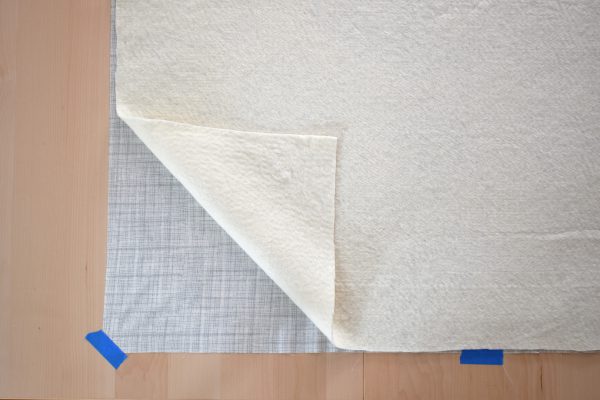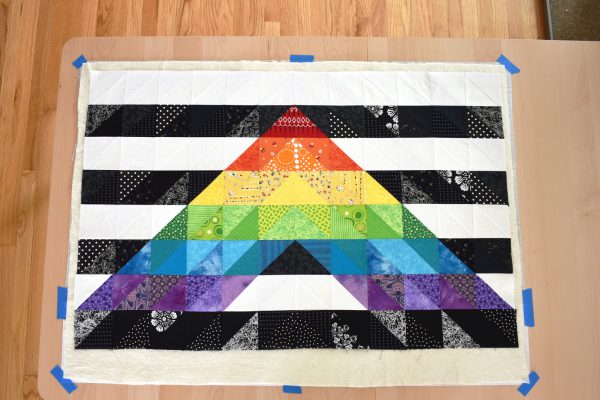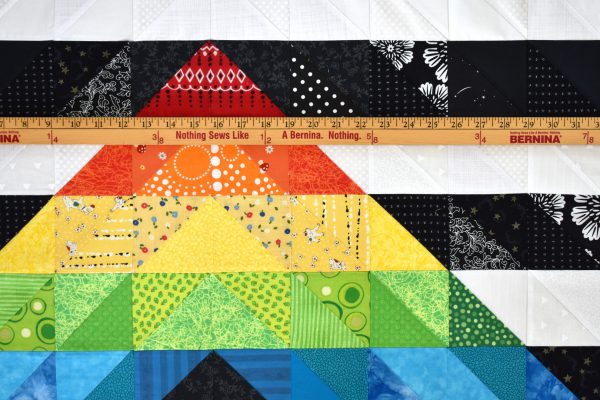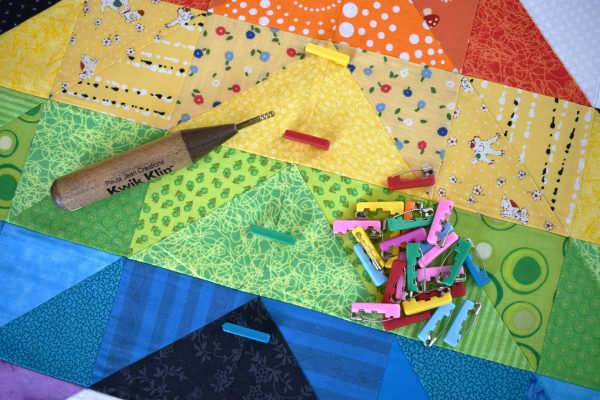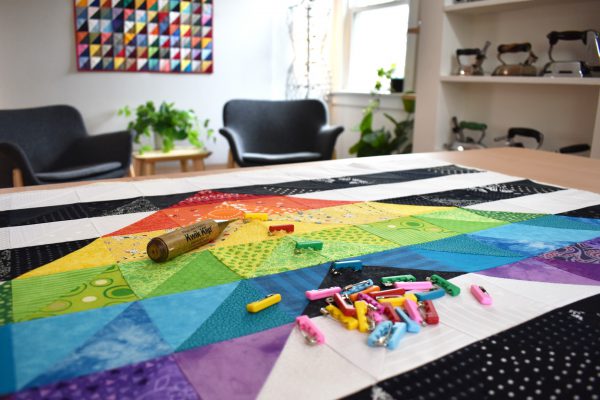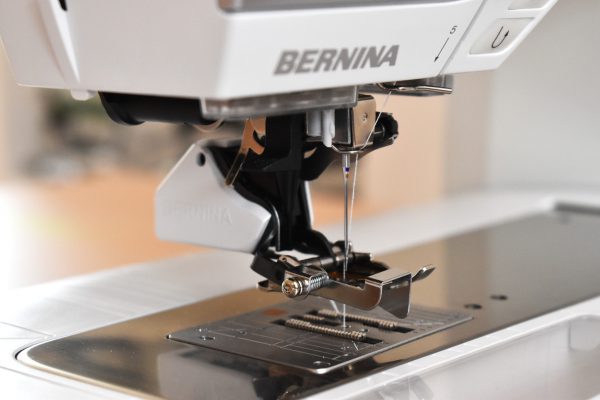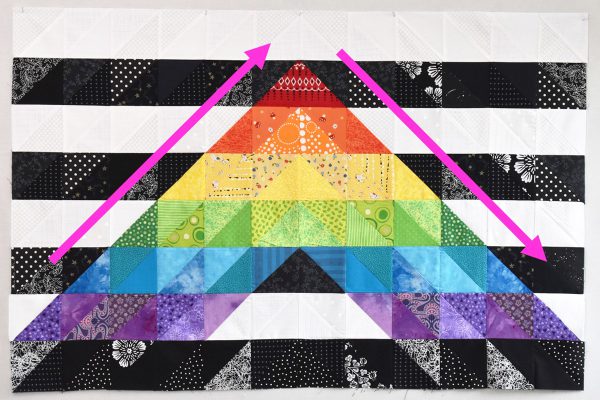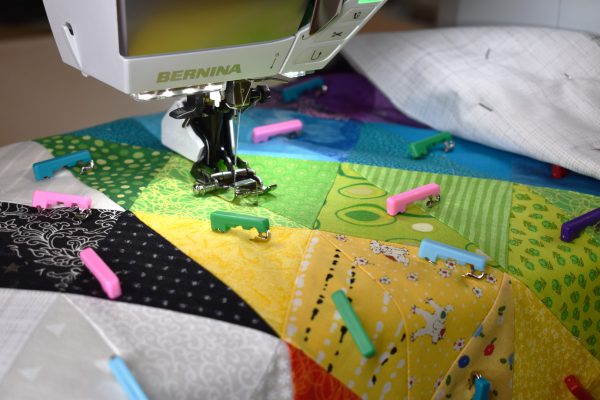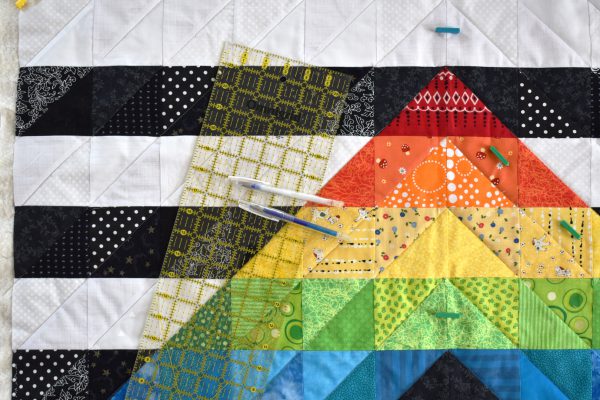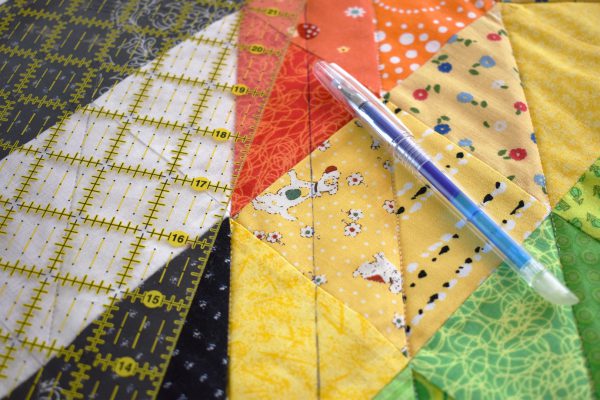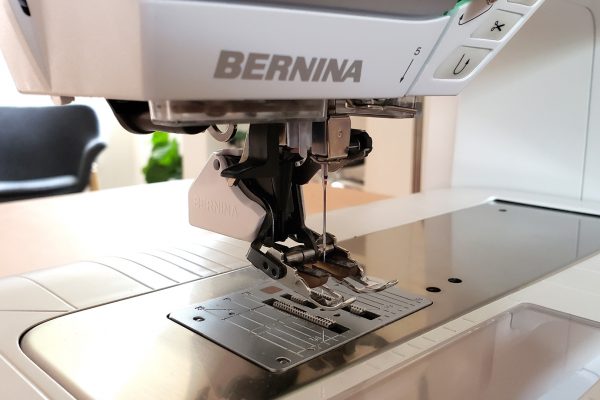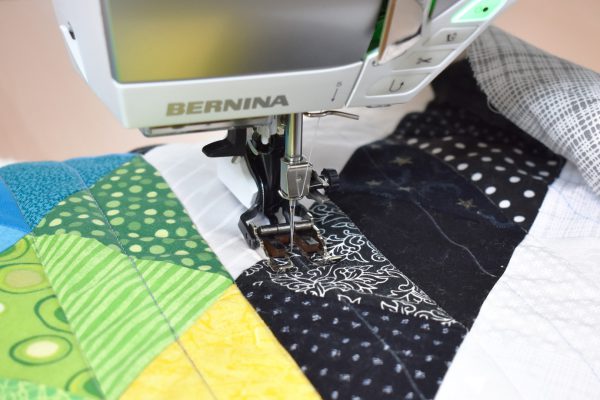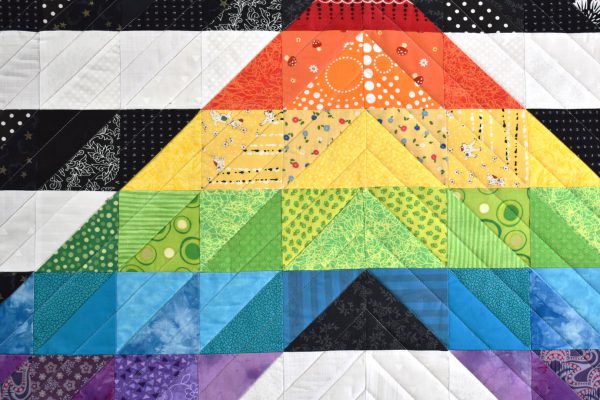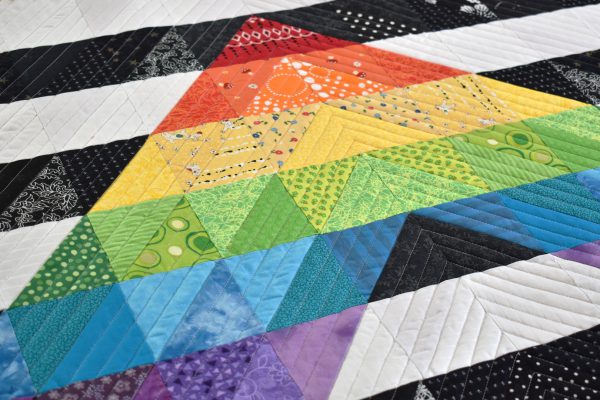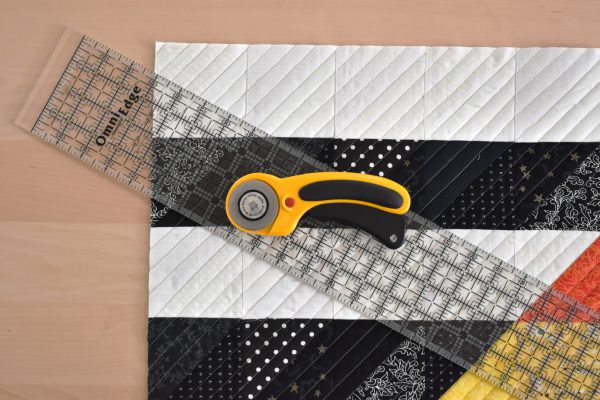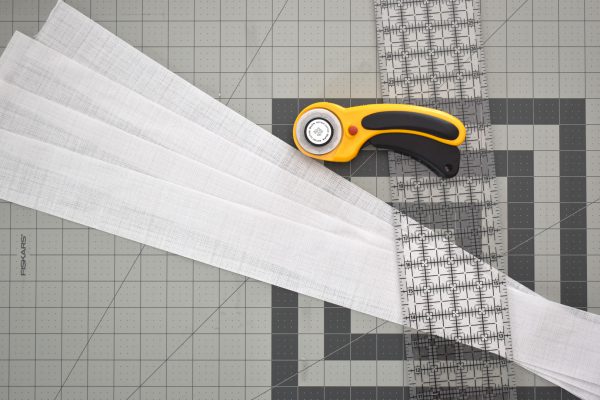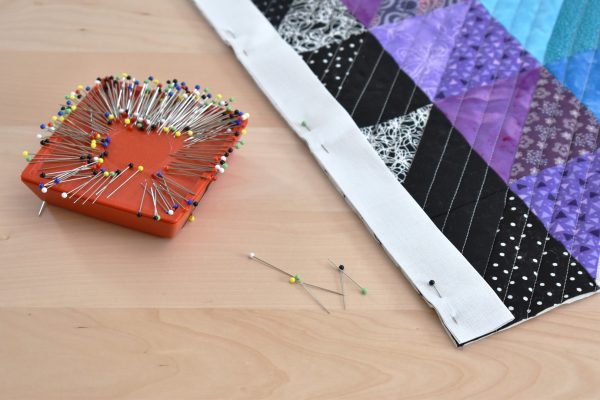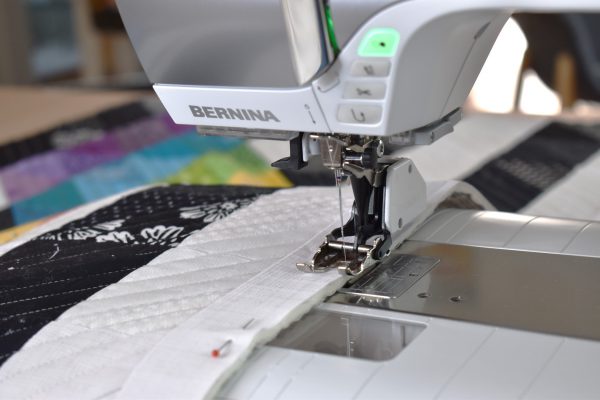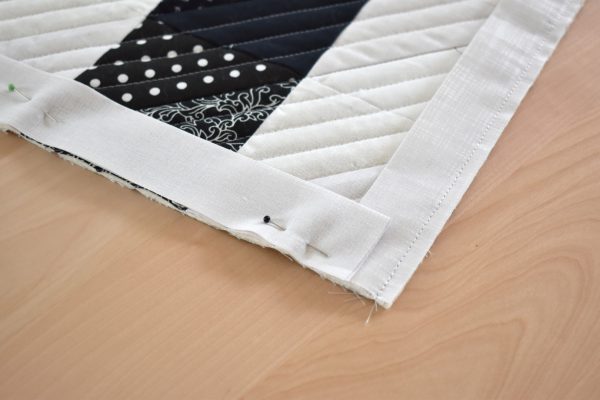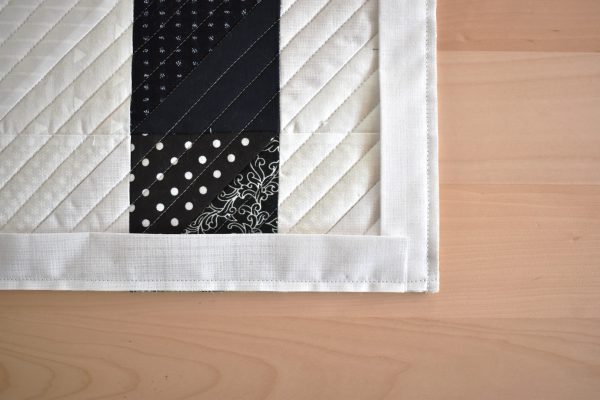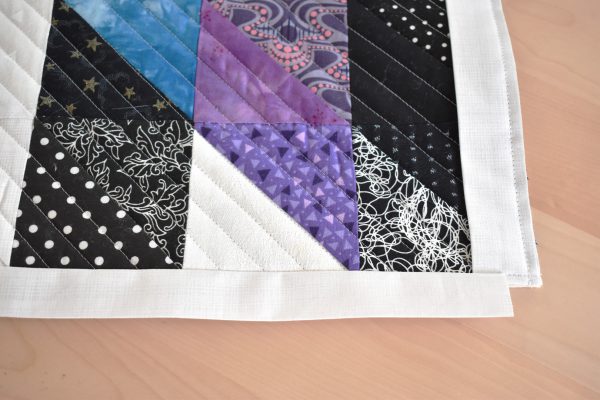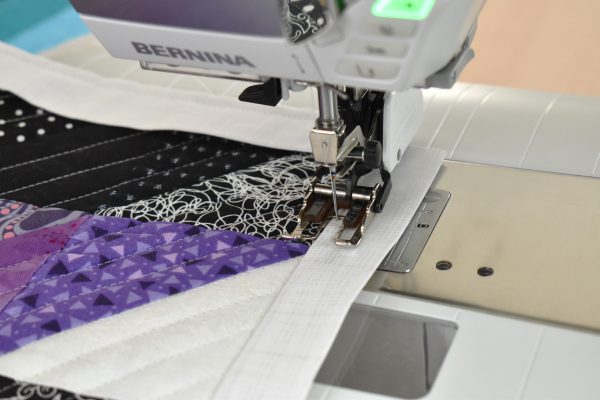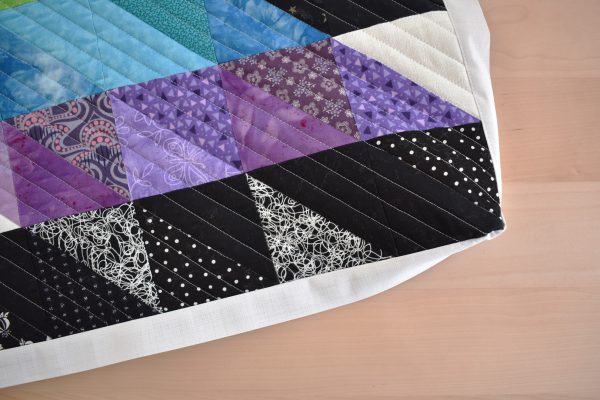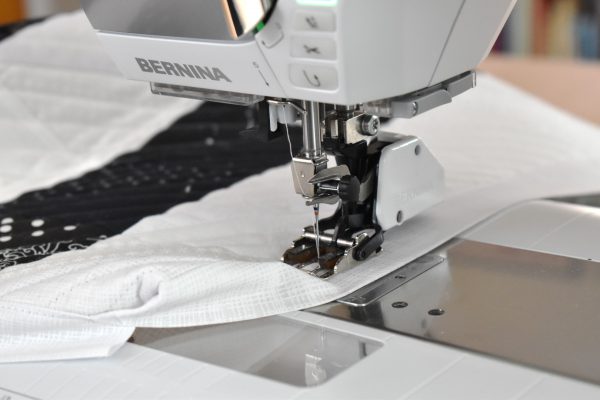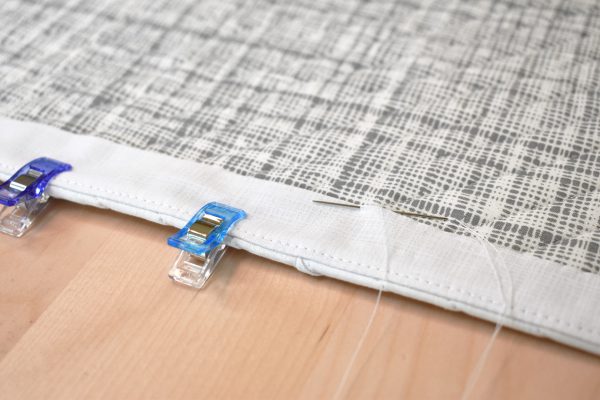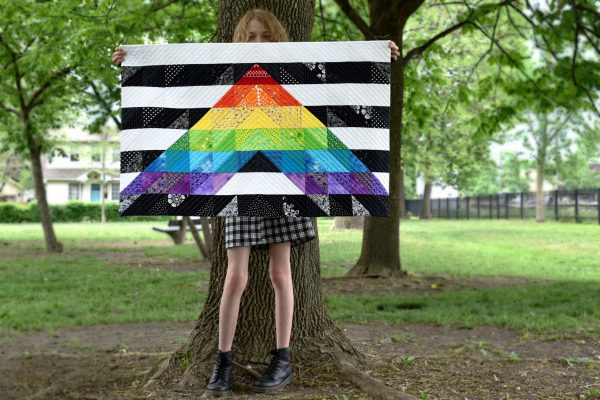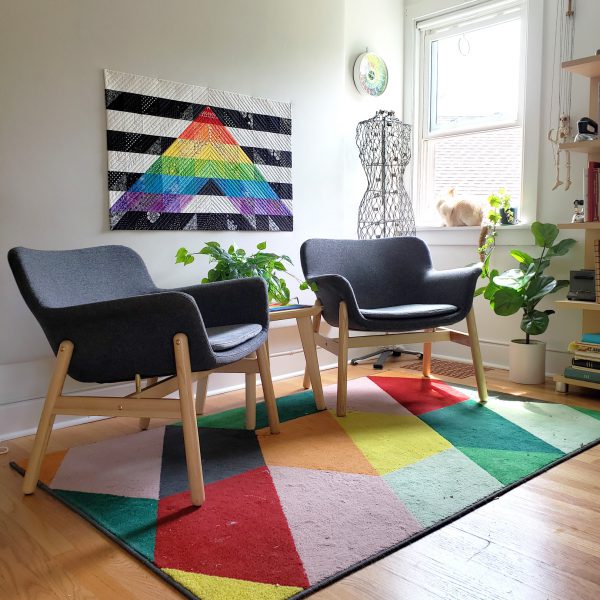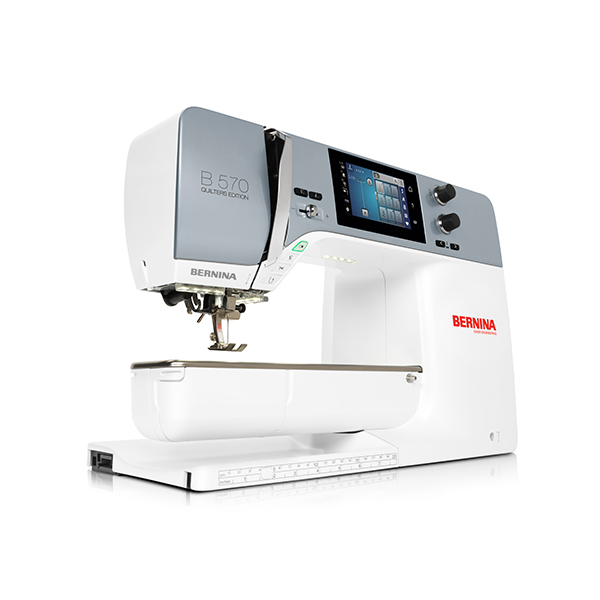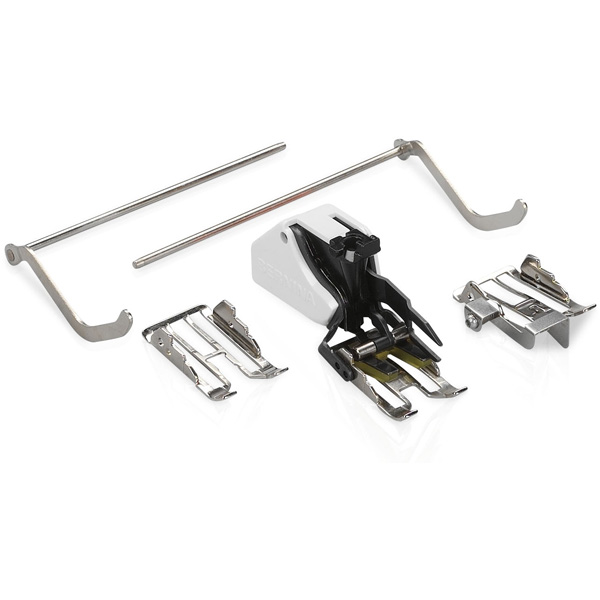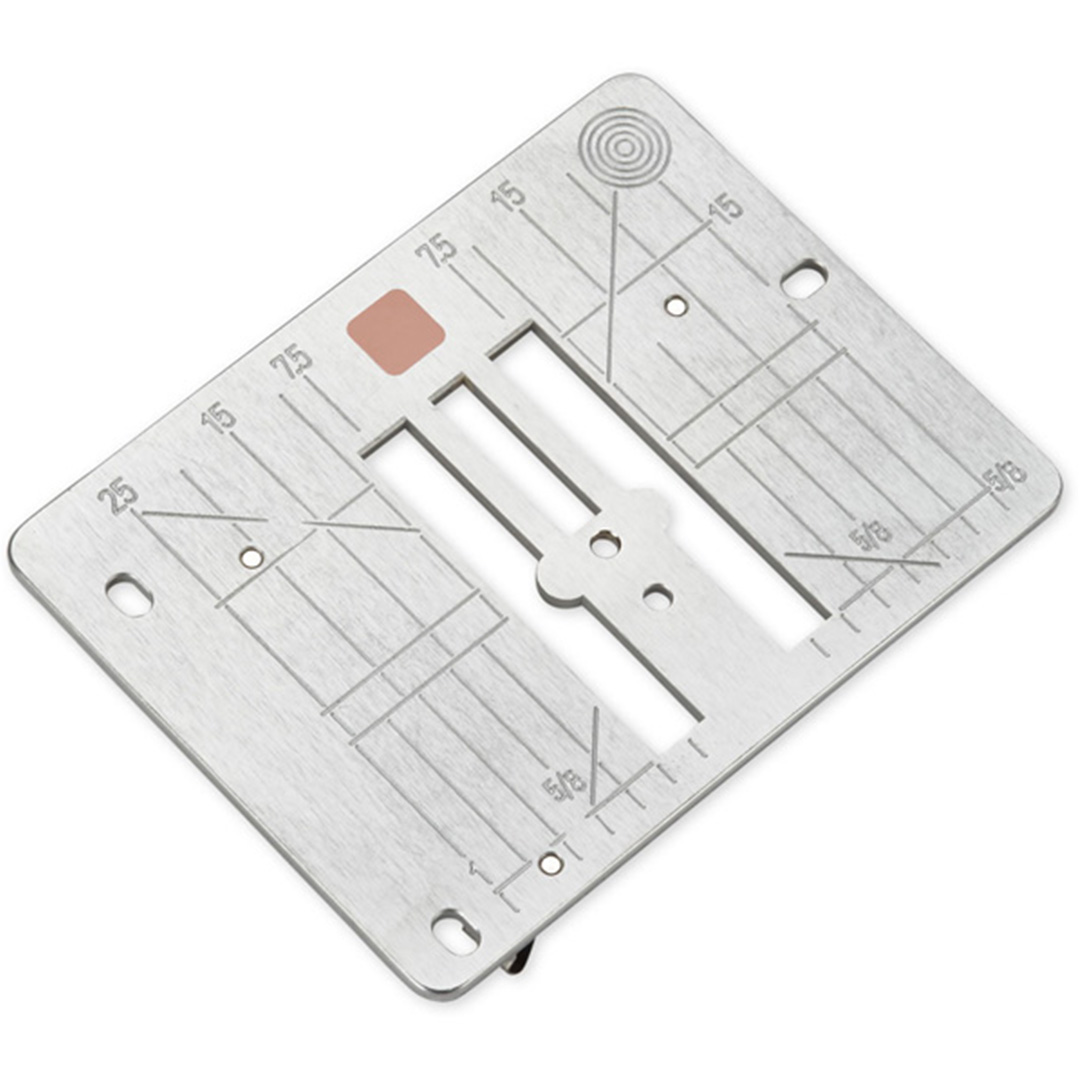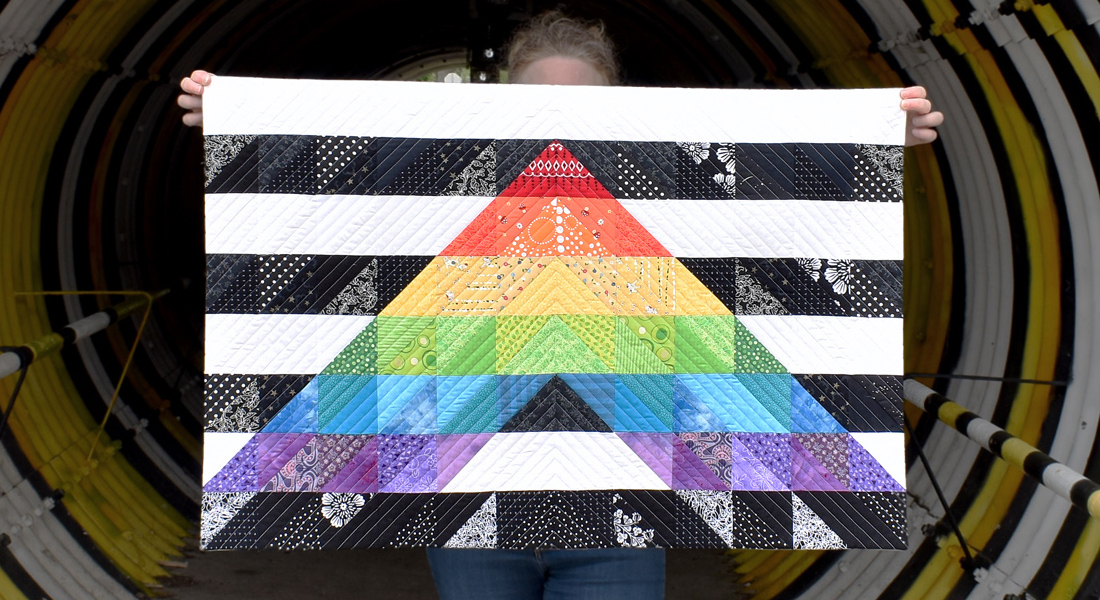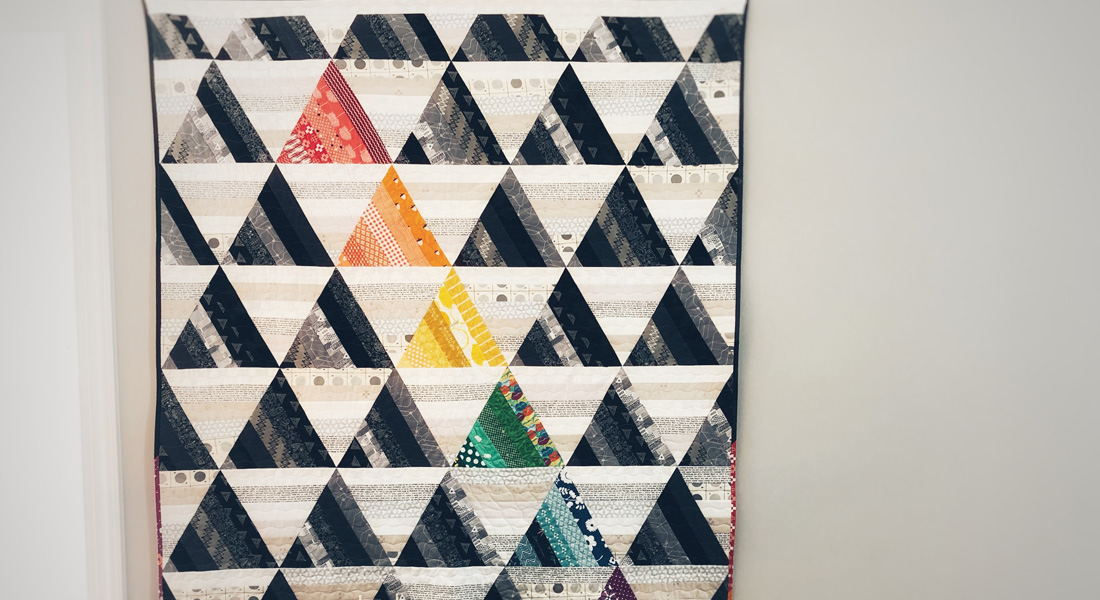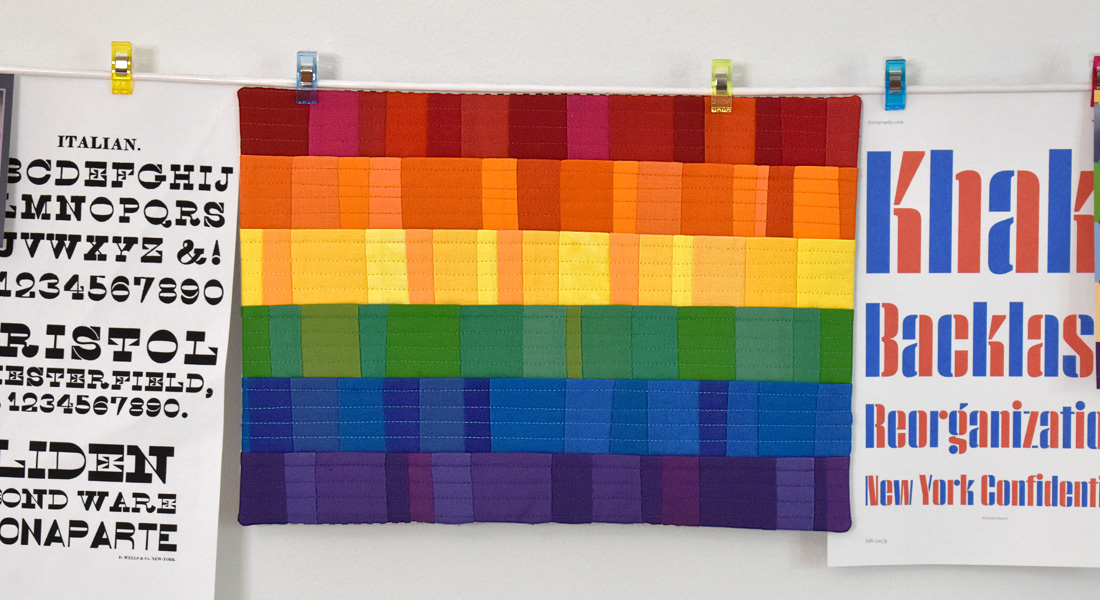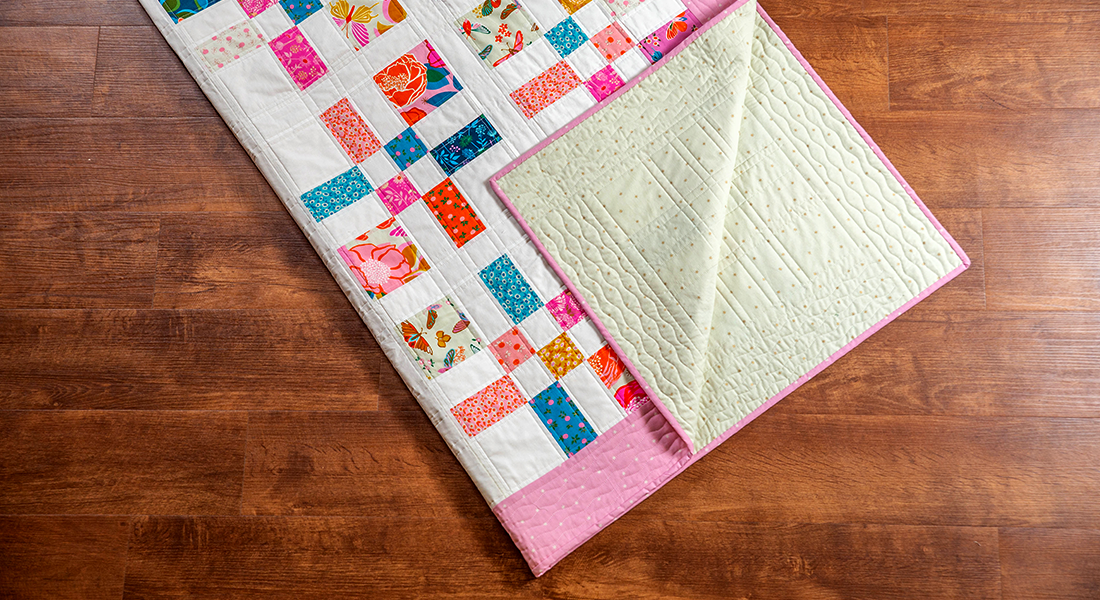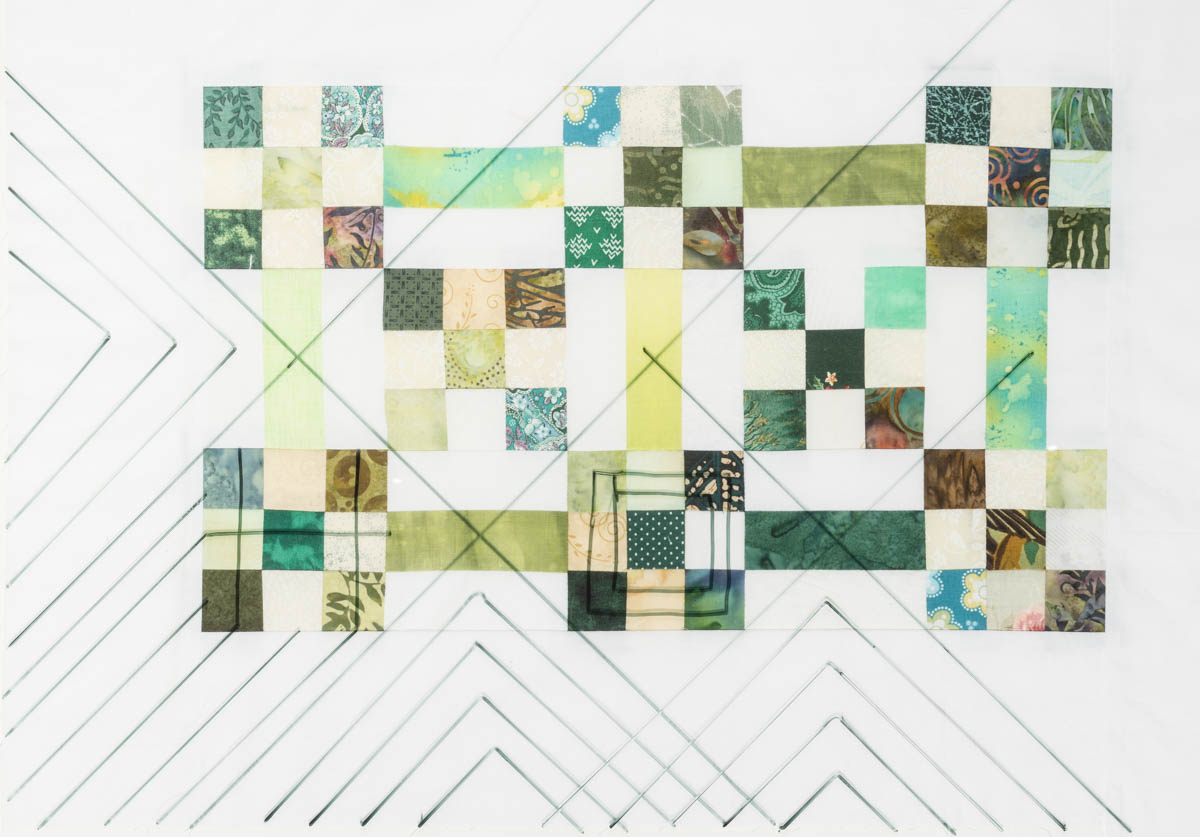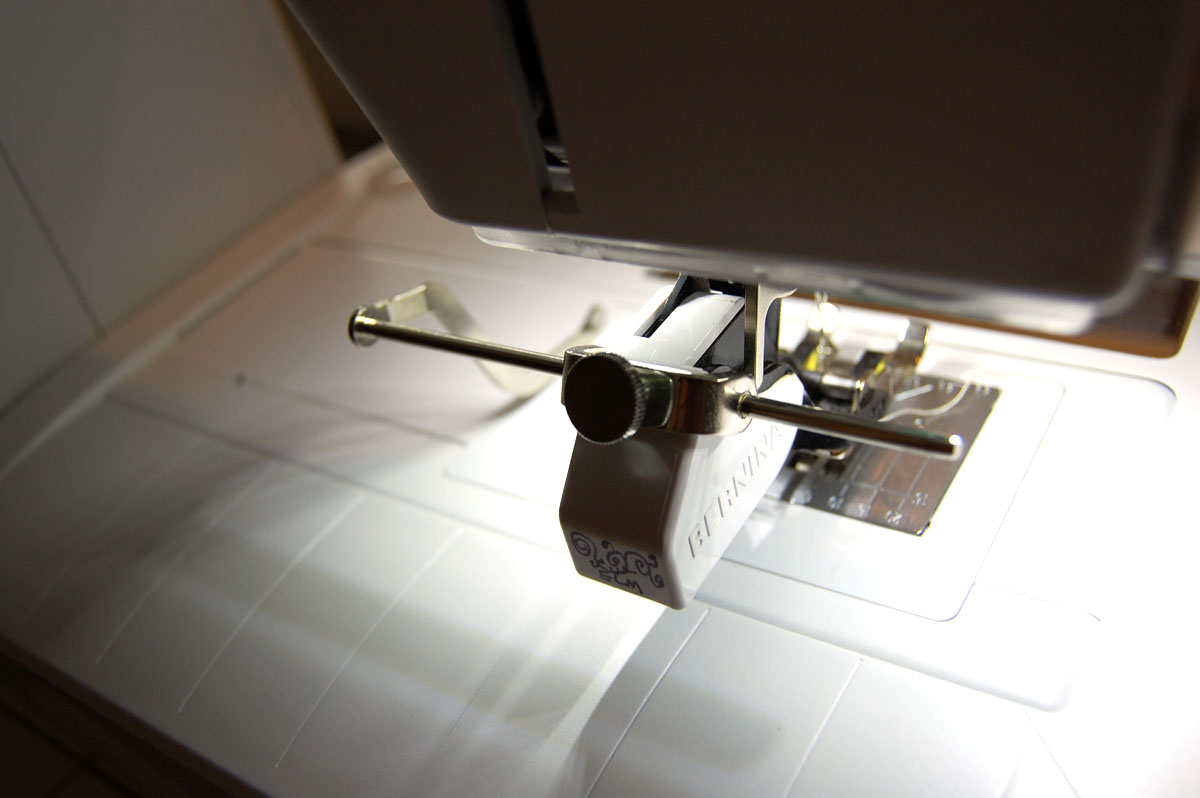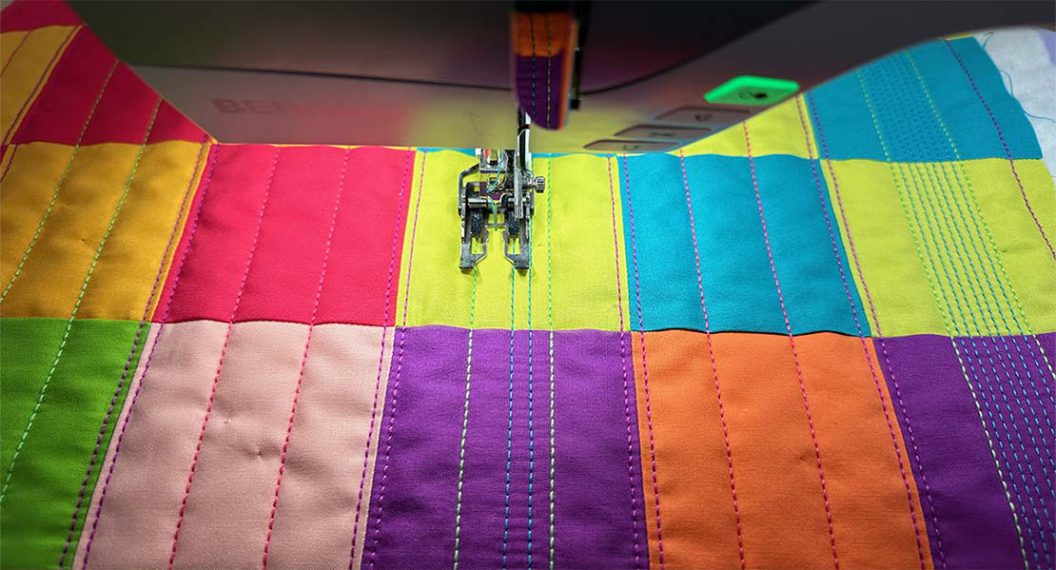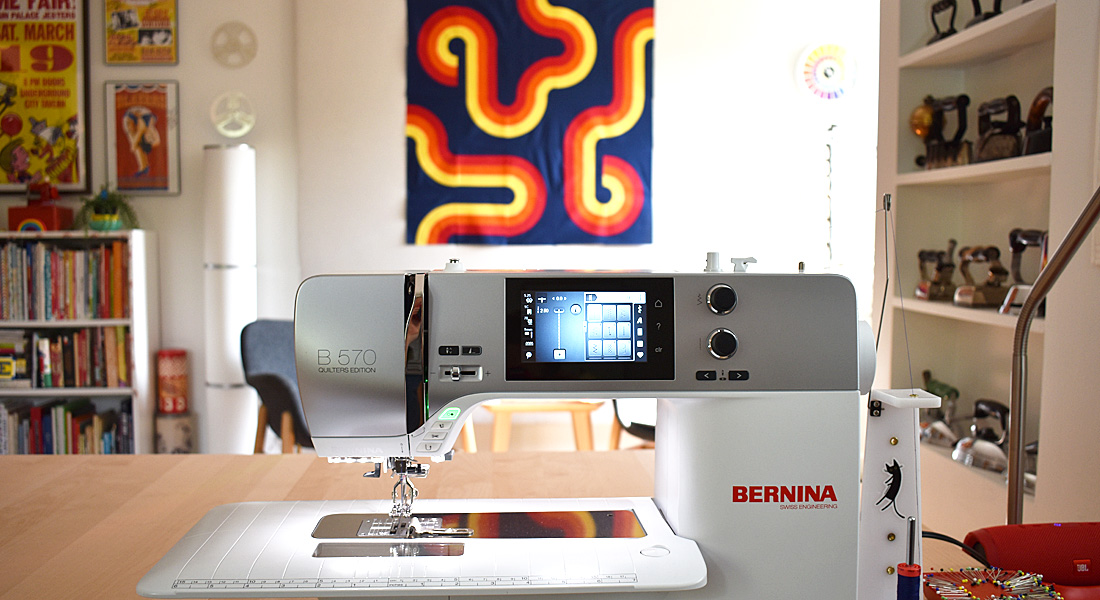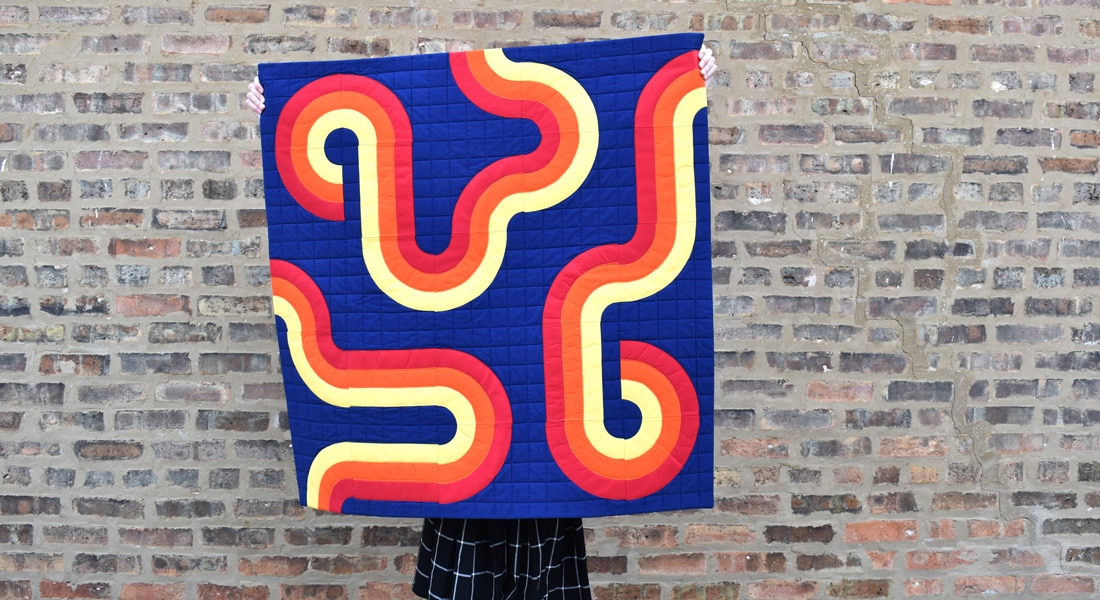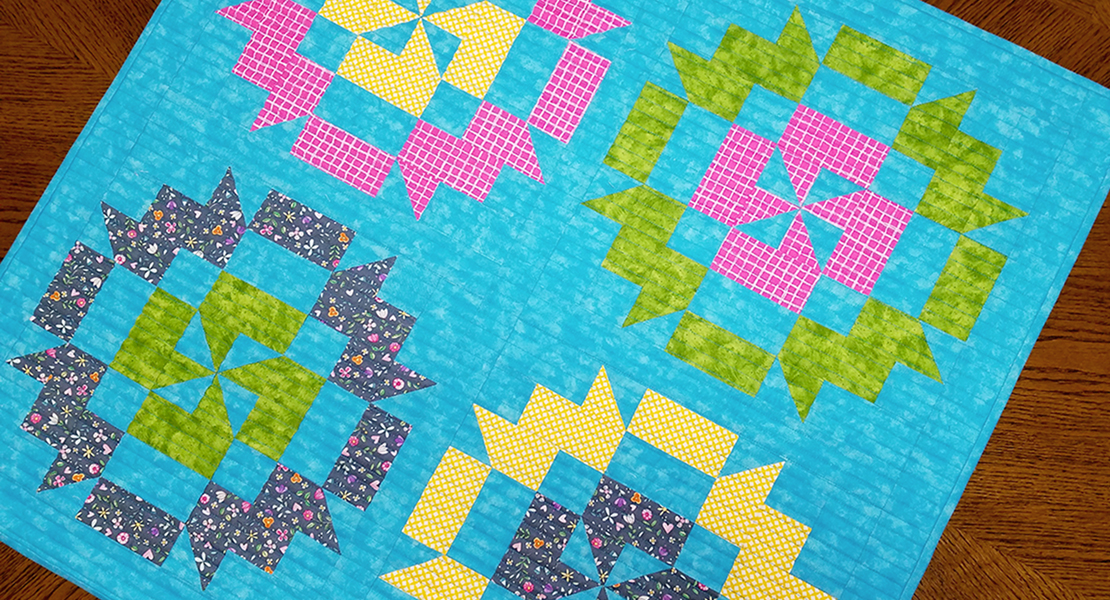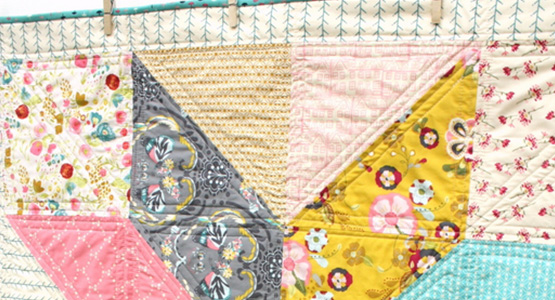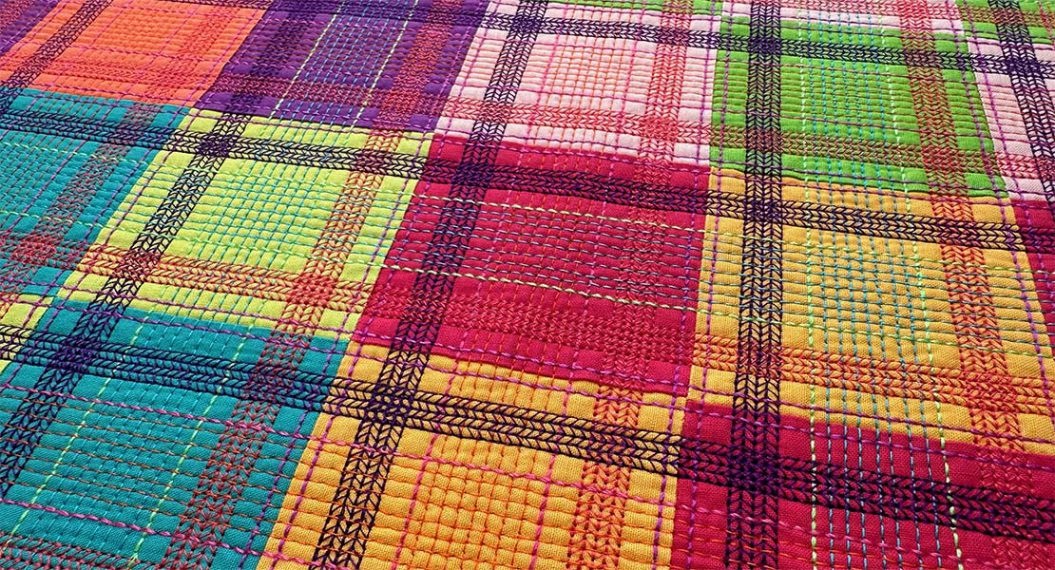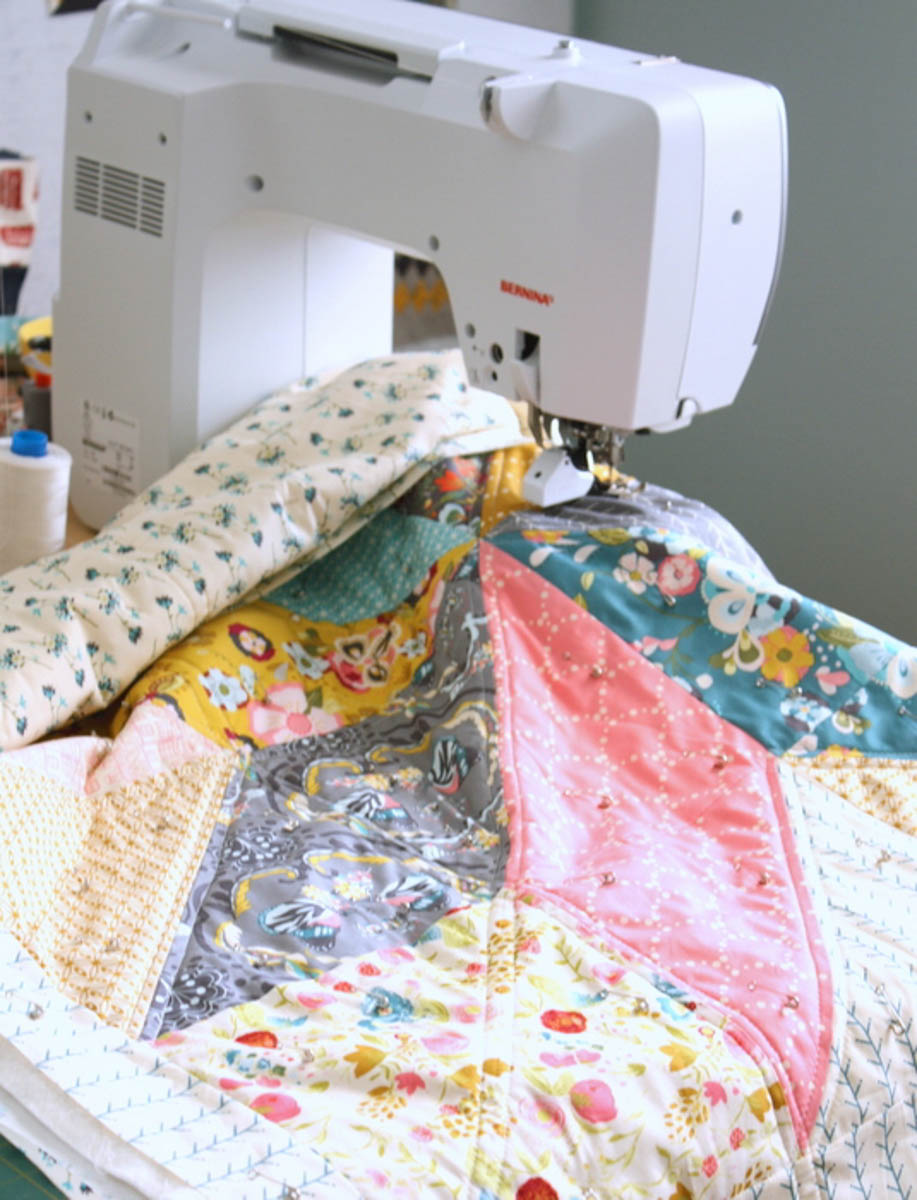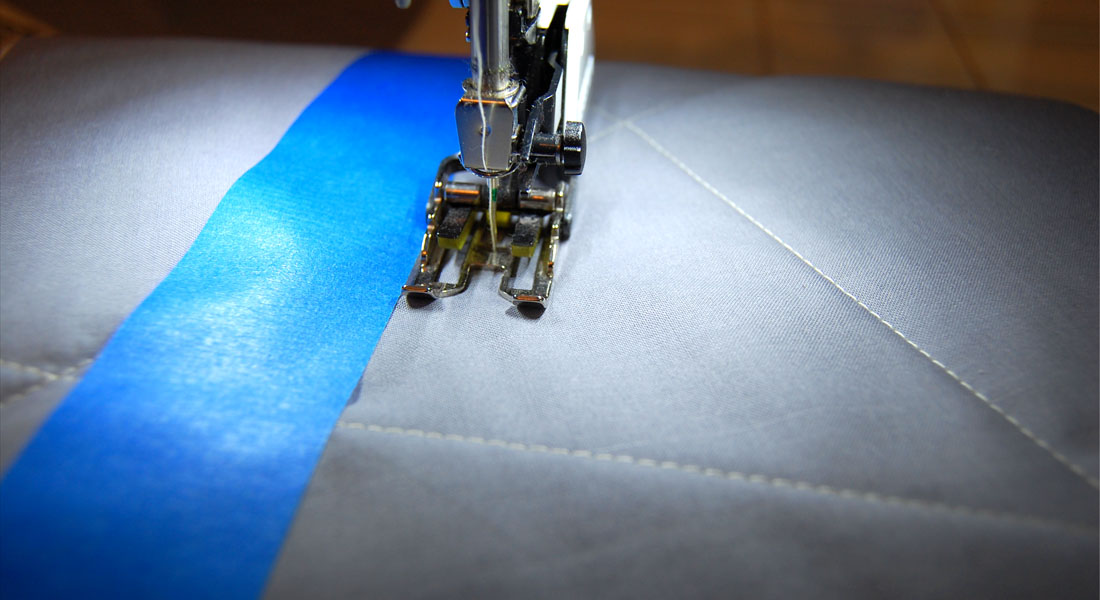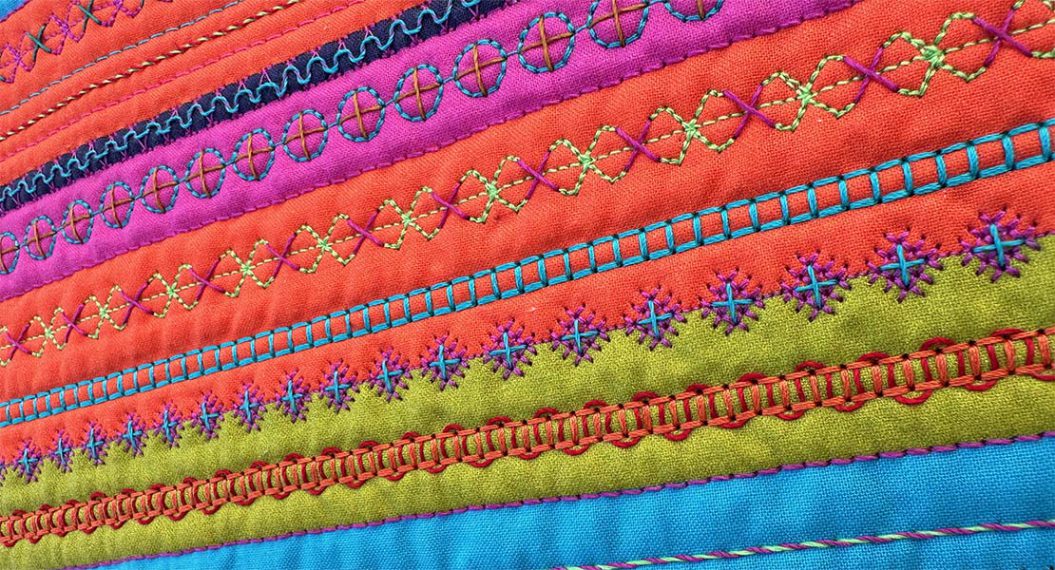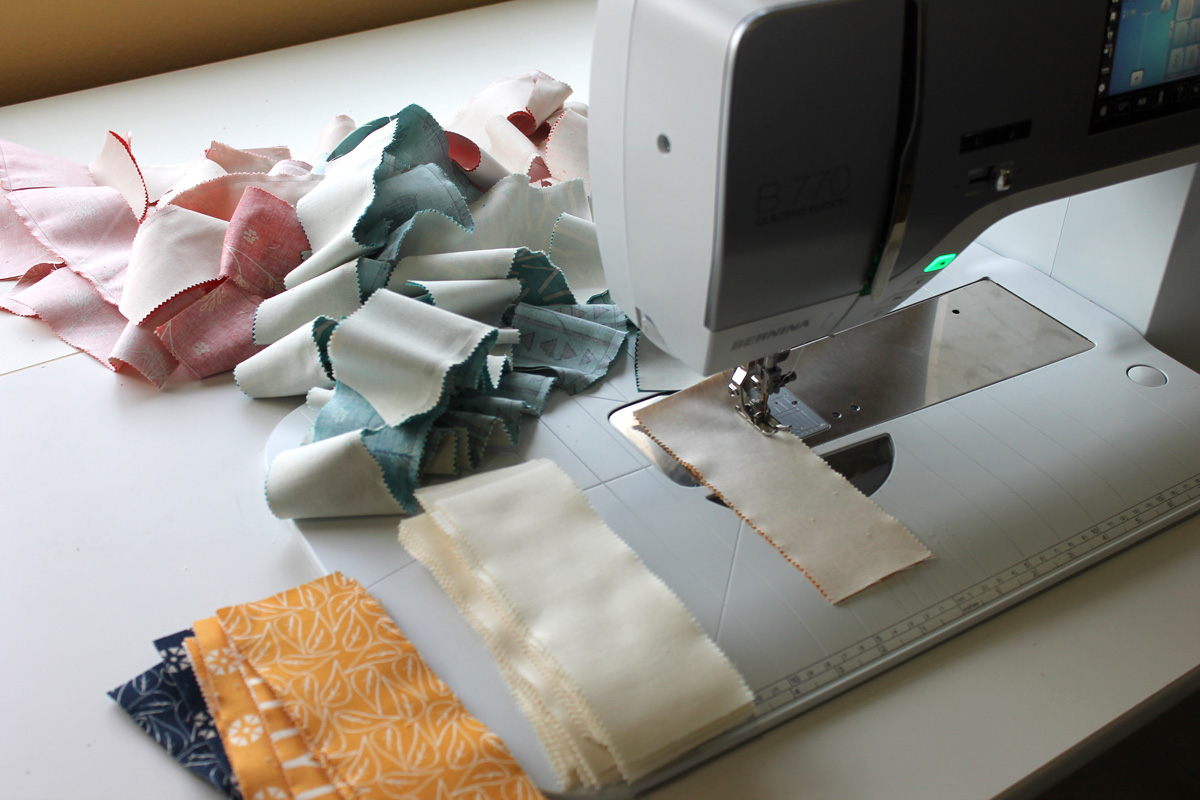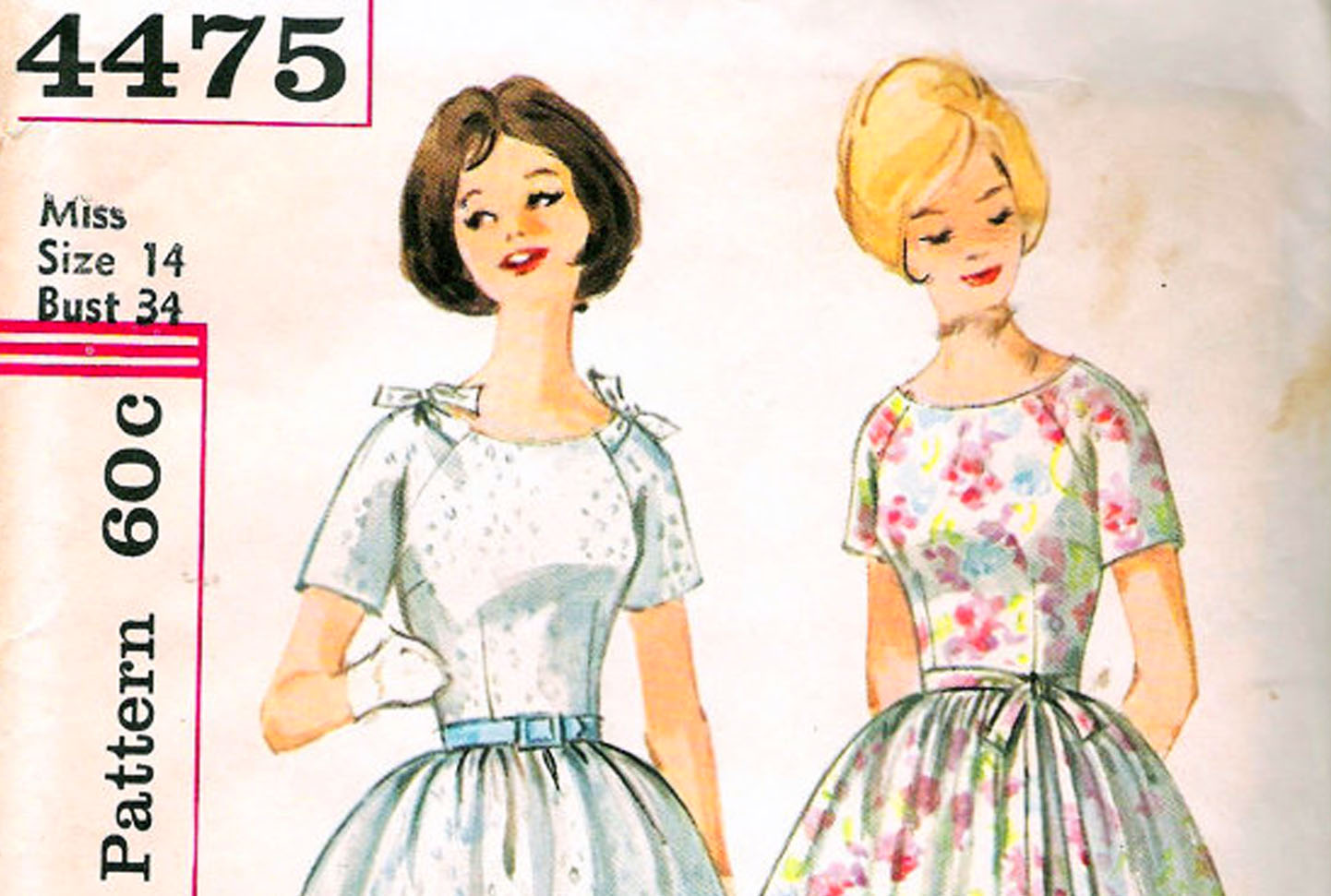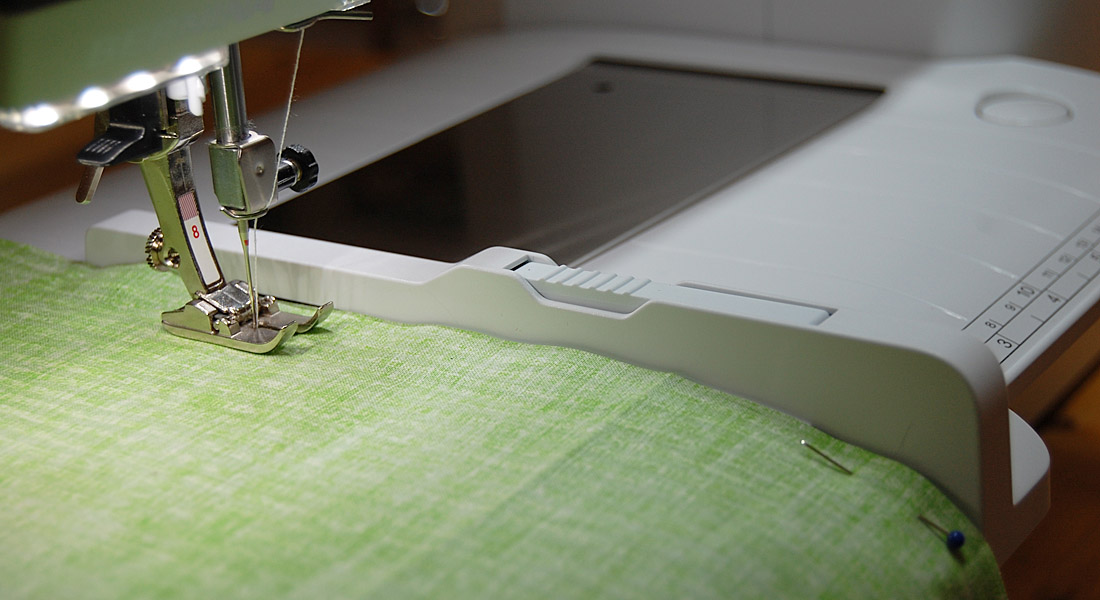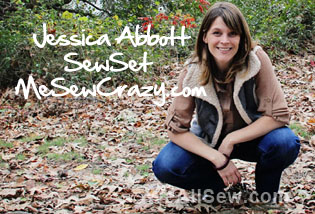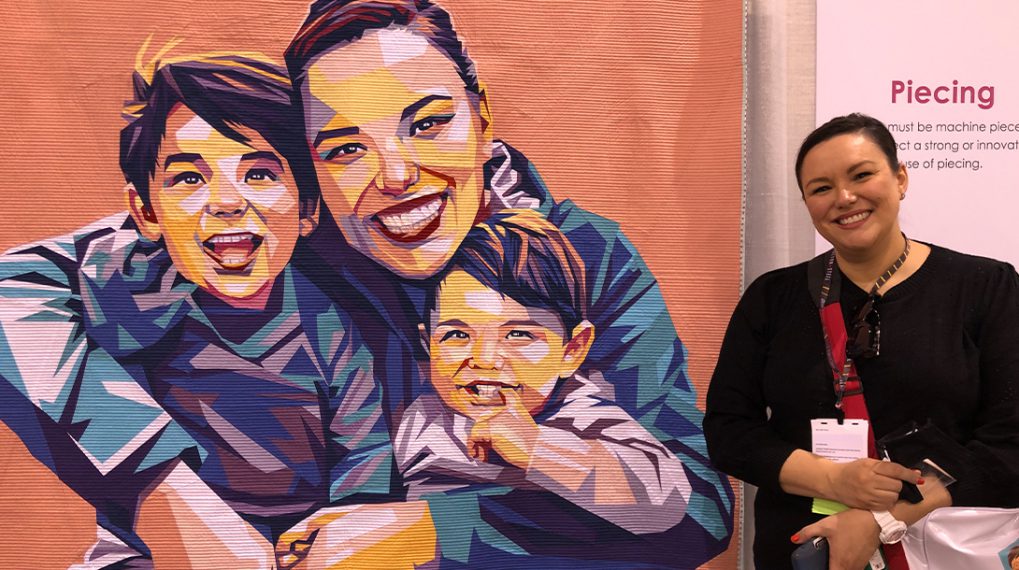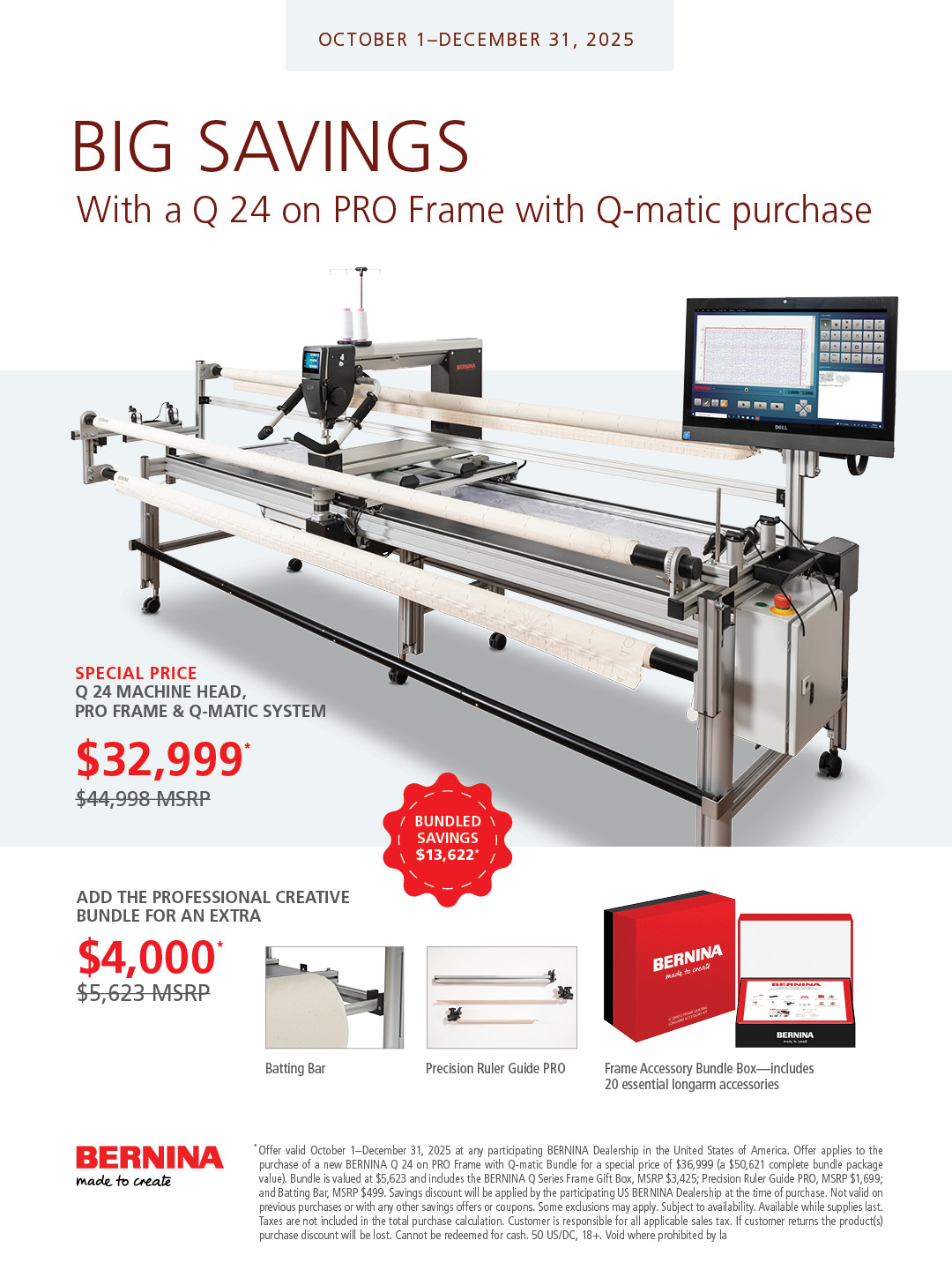Straight Ally Pride Quilt Tutorial, Part 2
Welcome to Part 2 of the Straight Ally Pride Quilt Tutorial!
Click over to Part 1 to find a complete materials list, and learn how to cut and piece the quilt top. The quilt finishes at about 36″ wide by 24″ tall and is created using half-square triangles that finish at 3″ x 3″ square. I created this mini quilt entirely from scraps of fabric and quilt binding, but I’ll also list fabric amounts needed if you plan to purchase materials to complete the project.
Basting the Quilt
Make sure the quilt top is pressed and ready for basting.
Because this quilt top has both light and dark fabrics, take a little extra time to remove stray dark threads from the back. Any dark thread that ends up in the light areas will show when the quilt is completed. I use a pair of thread snips, tweezers, and a lint roller to pick up and remove those stray threads.
There are a few different methods to baste a quilt. I prefer pin basting, but with a quilt this small you can certainly spray baste. Check out this spray basting tutorial by Christa Watson here on WeAllSew.
Prepare the backing fabric by cutting to approximately 44″ wide by 30″ tall.
Cut the backing to size (I pieced my backing from scraps, then cut it to size). This quilt fits on my tabletop, so I am basting directly on the table. Spread the backing, right side down, over the basting surface and secure with blue painter’s tape. Don’t pull or stretch the backing while taping, the tape is to help keep any small wrinkles or puckers forming while adding the other layers.
Next, add the batting cut approximately the same size as the backing. Take your time smoothing out any wrinkles from the center out to the edges.
Carefully add the quilt top on the batting, smoothing out any wrinkles.
Use a straight edge to help you smooth the patchwork as straight as possible. You’ll have a bit of wiggle room to shift the top layer this way or that to make the rows as straight as possible. Line-up the straight edge with one of the rows, and use your hand to gently move the fabric up or down if needed.
I use quilter’s safety pins with safety pin covers to baste, along with a Kwik Klip pin tool – both are finger savers!
I begin pinning in the center of the quilt, working out to the edges until the entire quilt is basted well.
Quilting the Straight Ally Pride Quilt
You can choose to quilt as desired! I created straight line quilting following the diagonal seams in the HST’s, and I’ll show you how.
Use Walking foot #50 with the stitch-in-the-ditch guide and white thread in the machine. If you’re not familiar with the stitch-in-the-ditch technique with the walking foot, check out these awesome tips. I use the same white polyester thread that I used to piece this project, polyester thread is incredibly durable for a simple project like this.
Quilt in the ditches made by the diagonal HST seams in the quilt top. The arrows above show you these seams as a guide.
Using the blade on the sole of the foot, stitch along the seams. When reaching a corner, leave the needle down to pivot and turn the corner.
This is what the quilt will look like after the stitch-in-the-ditch quilting. You can stop here if you like, but I love the look of straight line quilting and will add more lines. I use my quilting ruler and fabric marking pens to make lines to follow in this step.
I use the ruler to find the center between two lines of stitching and mark with the fabric marking pens.
Switch the sole on Walking foot #50 from the center guide to the open toed quilting foot.
The open toe foot allows you to clearly see the needle and follow along the marked lines.
This is the quilt after adding the additional stitching. You can absolutely call this finished, but I’m choosing to add one more round of straight line stitching.
I use the same open-toe sole on Walking foot #50 and the foot itself as a guide to stitch in between these lines of stitching. I simply guide the edges of the foot in between two lines of quilting – it pretty much fits right in there.
I’m happy with the final result!
Trim the edges of the quilt using a large cutting mat, ruler, and rotary cutter.
Make a Quilt Facing
This quilt has a facing instead of a binding. Typically a “facing” is a term used in clothing construction and describes a finish to an opening in the garment (think neckline or armhole) that doesn’t show from the front. It’s the same idea here, creating a fabric finish that is turned to the back and not visible from the front of the quilt.
Cut four facing strips, each 2 1/2″ wide by about 38″ long. Press the strips in half lengthwise, wrong sides together.
Begin by sewing facing strips to the top and bottom long edges of the quilt. Start pinning one facing strip at one front edge of the quilt, matching raw edges. At the other end of the quilt, cut the facing strip even with the opposite edge. Repeat with other long edge.
Using the walking foot with the same open toe quilting foot, stitch all along the edges with a 1/4″ seam, backstitching at both ends.
Now add the other facing strips to both short ends of the quilt. Start pinning the side facing strip 1/2″ down from the edge of the quilt. Trim on the other end 1/2″ short of the other edge. Making these facing strips 1/2″ shorter on each end will reduce bulk in the corners when turning the facings to the back of the quilt.
Stitch along the entire length of the short sides with a 1/4″ seam, backstitching at both ends. Your facing corners should look like the photo above.
In the next steps I am understitching the facings. Understitching is another garment sewing technique, and creates a facing that favors (or rolls over more) to the back side so it is extra invisible from the font.
First, press the facing strips on the short sides of the quilt over the seam allowance, out away from the quilt top.
Stitch the facing strip to the seam allowance about 1/8″ away from the seam, sewing the full length of the strip. Repeat on other side.
Next, gently turn the long-facing strips over. Do not try to push out the corners at this step. Press the long facing strips away from the quilt top, over the seam allowance, staying about 2″ away from the corners.
Stitch the facing strip to the seam allowance about 1/8″ away from the seam. Start and stop sewing about 2″ from each corner.
Now carefully turn the corners out, using a blunt chopstick or pencil eraser to help if needed. Press the facing well from the backside, pulling it over slightly to make sure it won’t show from the front.
Hand stitch the facing to the back of the quilt with needle and thread.
Finished!
